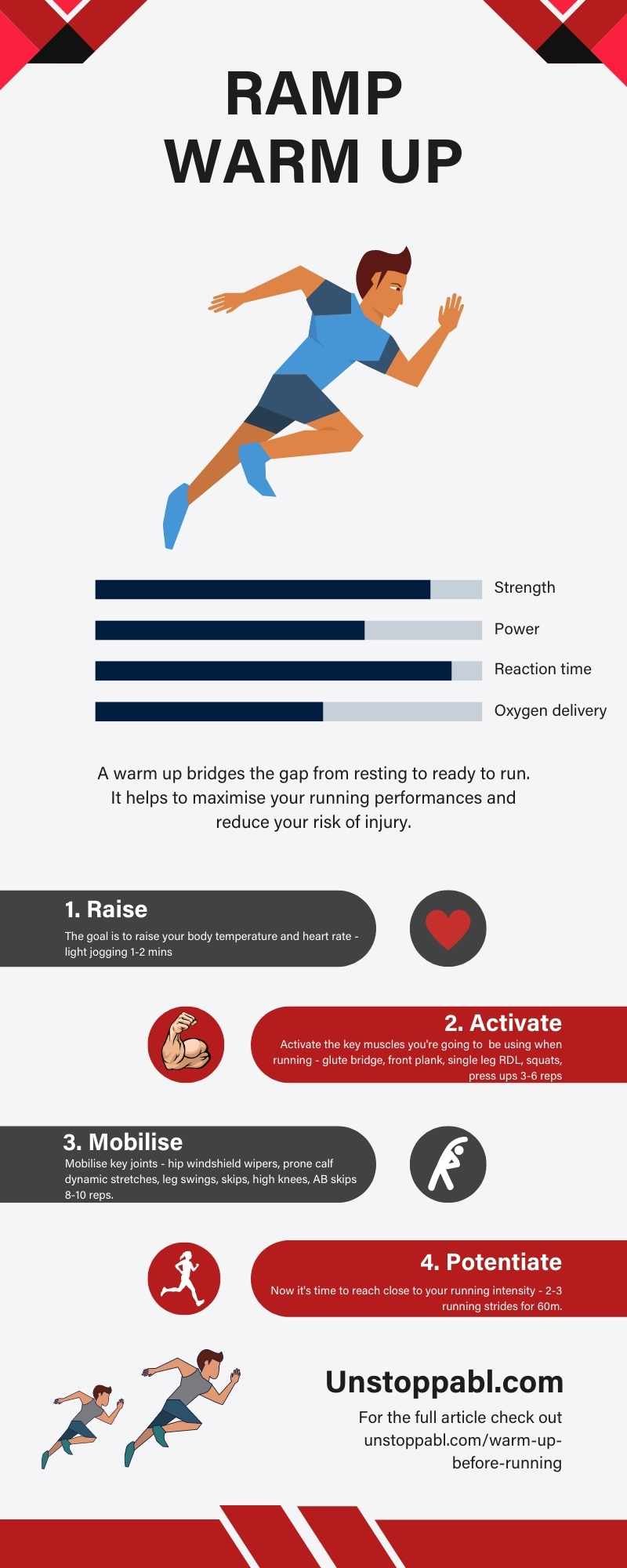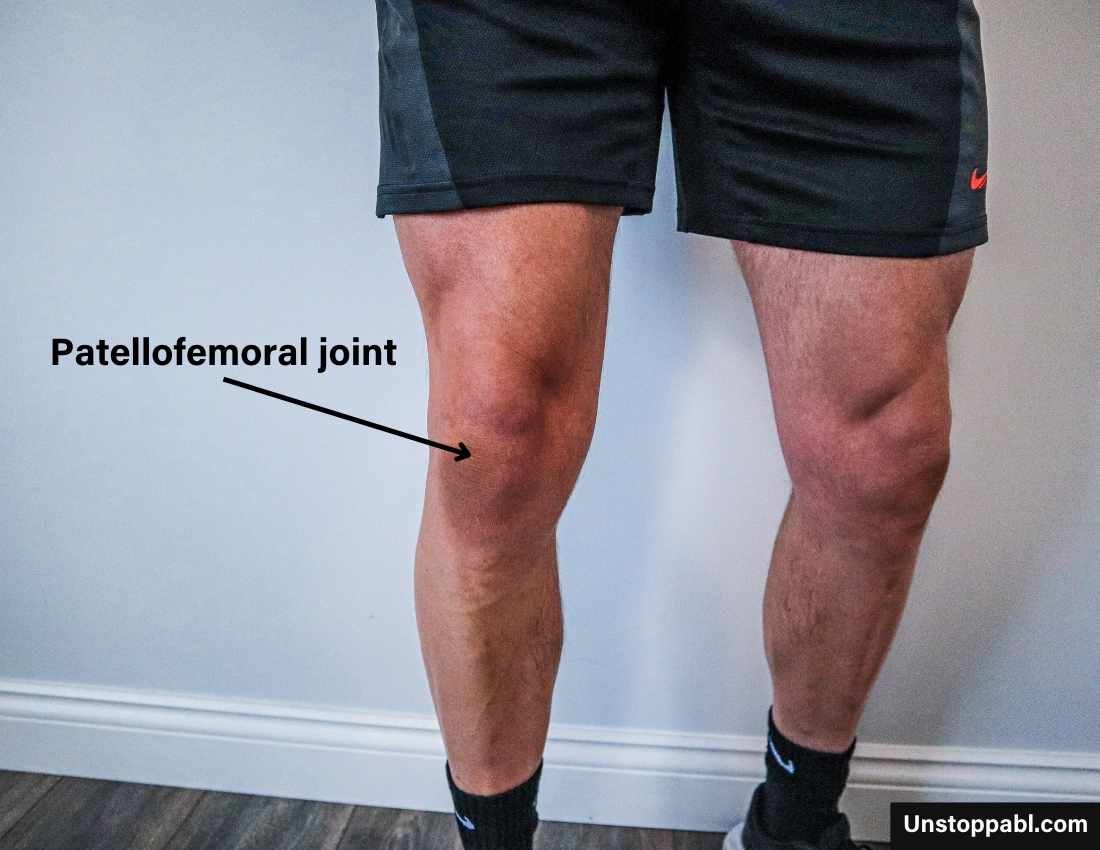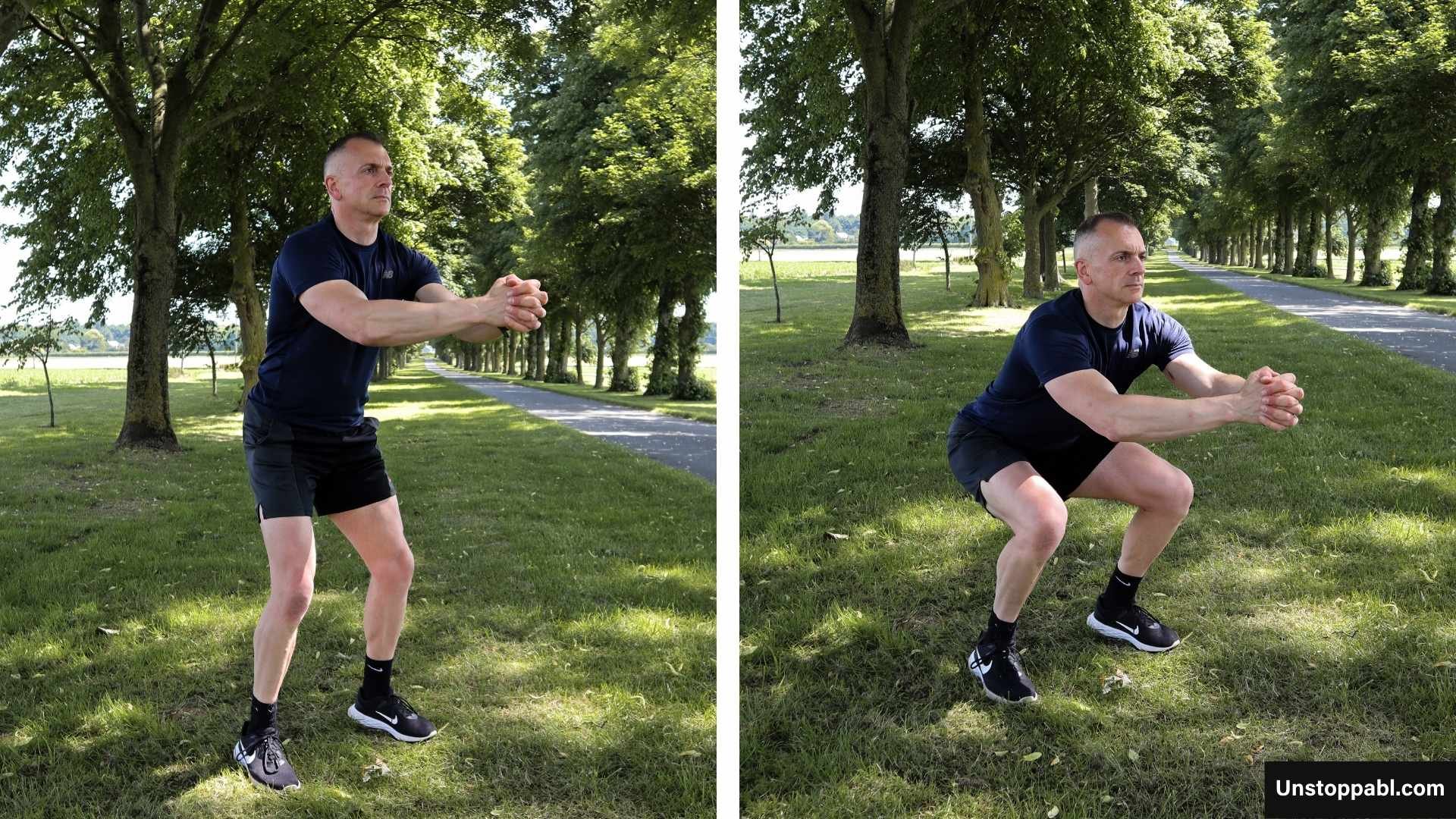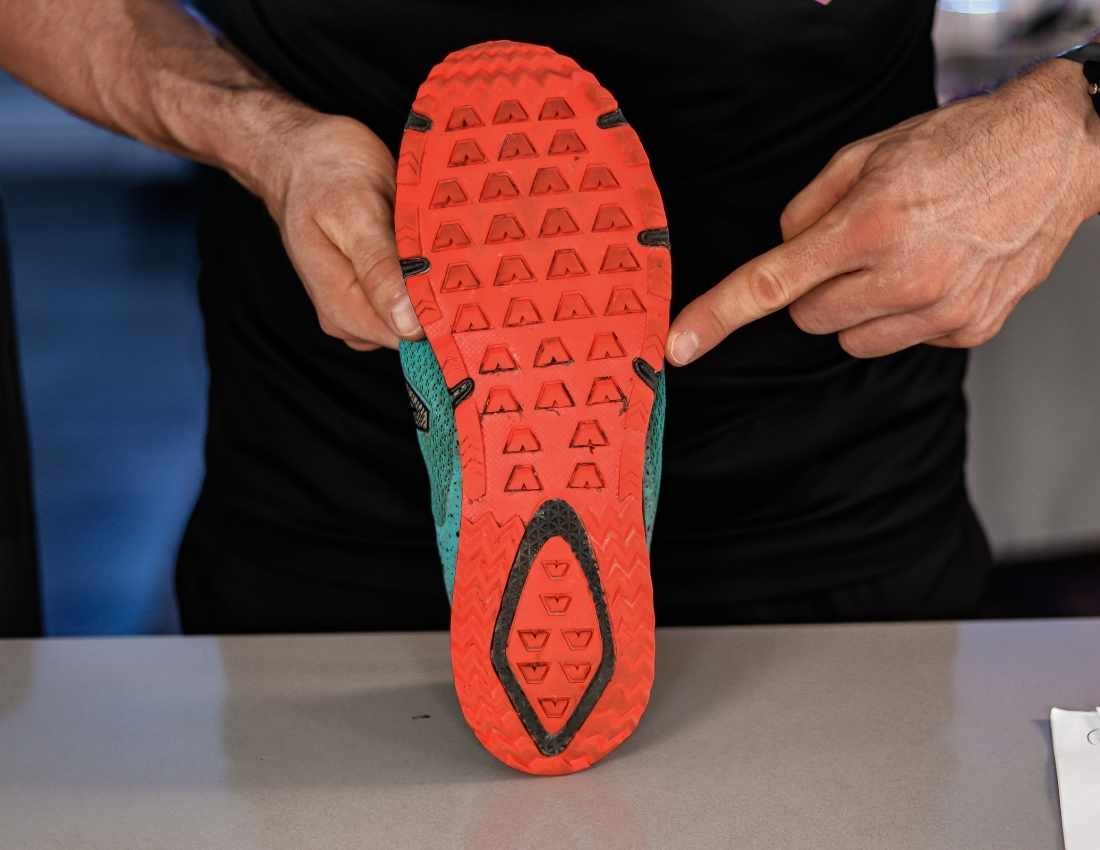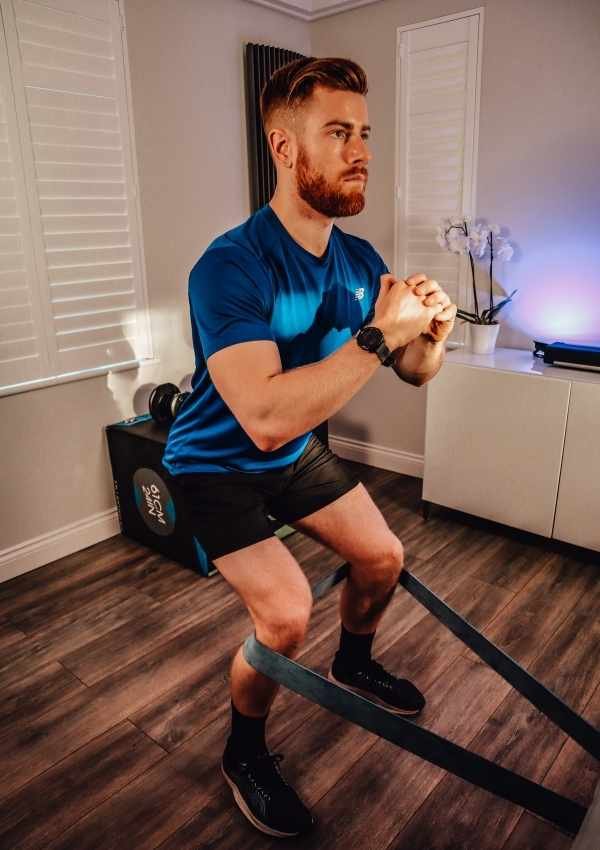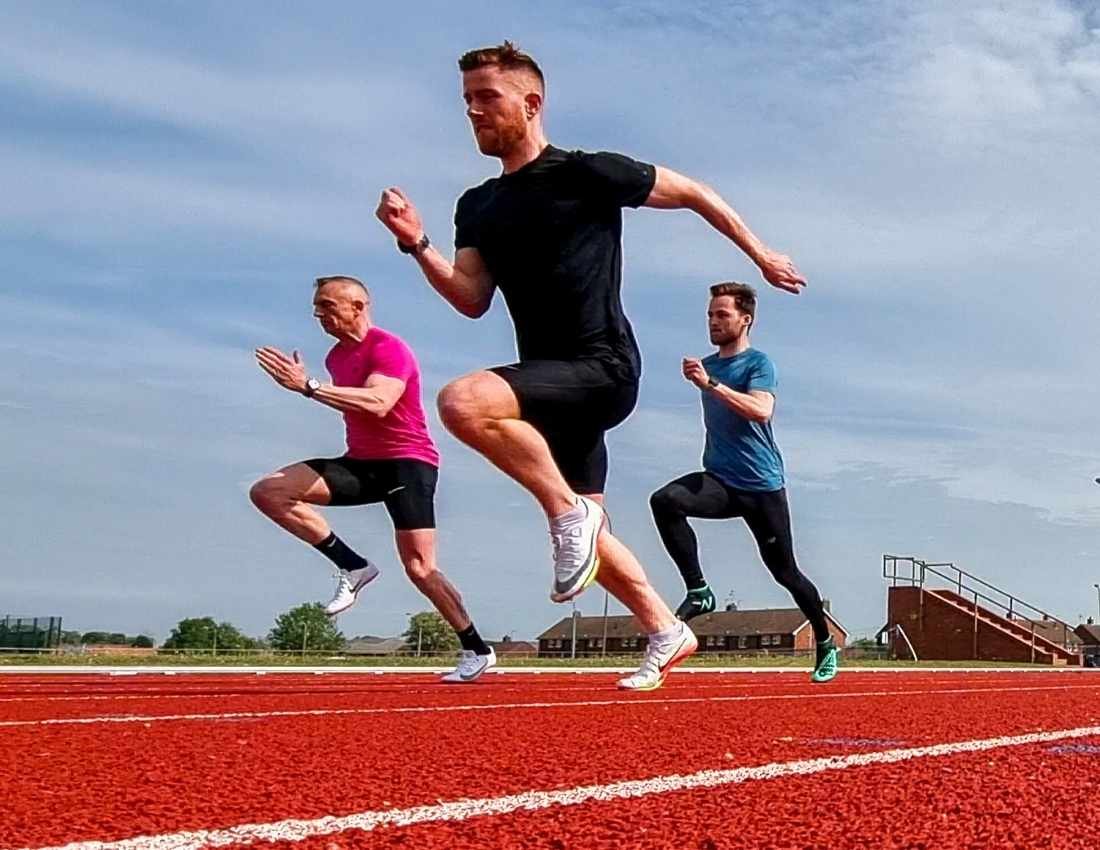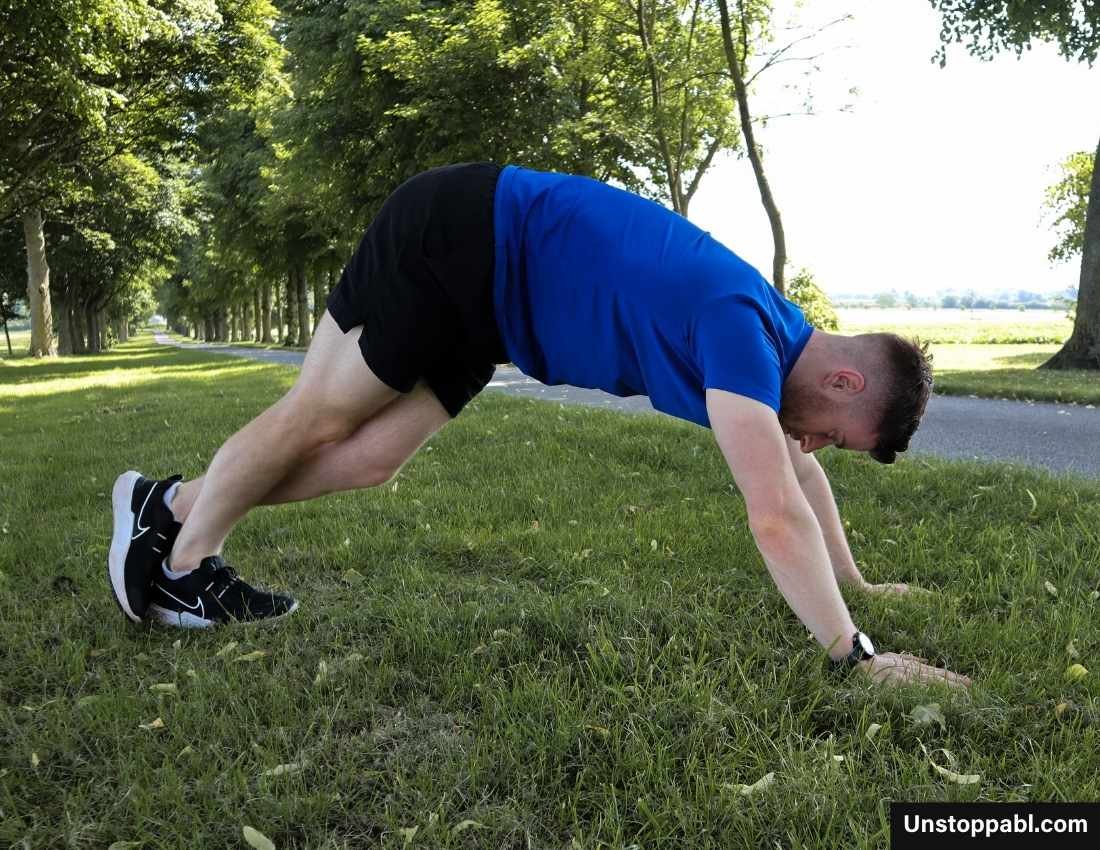How To Prevent Knee Pain When Running [15 ways]
How to prevent knee pain when running [15 ways]
Contents Show
You start running, your knees start to ache, and the ache turns into pain. You carry on, but you’re not enjoying your run. All you can focus on is the pain in and around your knees.
The next morning those first few steps when you get out of bed are even more painful. What’s going on?
You’re not alone. 79.3% of runners get injured, the predominant running injuries being around the knee. (1)
So how do you prevent knee pain when you run? How can you protect your knees? In this article, I’ll show you how let’s go...
Do a proper warm up
You need to warm your knees up, and the rest of your body. That starts with a proper warm up. You need to prepare your body and mind for the demands of running, especially if you have pain in your knee right now.
You don’t need loads of time to do a proper warm up either. You can warm up properly before running 5 minutes. Here’s a short video we made for you.
Here’s what you need to do in this exact order:
Raise your heart rate – light jogging, 1-2 minutes
Activate your muscles – bodyweight exercises 3-6 reps, 1-2 minutes
Mobilise your joints – focus on your lower body, 1-2 minutes
Potentiate with 1-2 running strides – close to the pace you’re going to run at, 1 minute
Think RAMP when warming up for running
Warming up will help your knees to release synovial fluid. Synovial fluid is like lube for the joints, it slides around better (let’s keep this blog PG!)
Synovial fluid helps to keep the joint between the femur and patella (patellofemoral joint) moving freely. This will reduce patellofemoral pain.
That means when you’re running and flexing and extending the knee joint you won’t feel that grinding sensation in your knee (yuk), and you won’t be in pain (yay!)
Also, by doing a proper warm up you will be activating the key muscles used for running.
The whole of your body is involved when you run. You should spend more time warming up your lower body - glutes, hamstrings, quadriceps and hamstring muscles.
More control, stability, and strength in your lower body help prevent knee injuries and pain when running.
A few exercises you should do are:
Glute bridge
Single leg Romanian deadlift
Single leg Romanian deadlift
Bodyweight squat
Bodyweight squat
2. Buy running shoes that suit your running style
When you wear the wrong footwear for your running style you can pull your knee cap away from its natural position. What that means is you’ll place more force and stress on certain parts of your knee. This can lead to pain when running and more running injuries.
Think of wearing the wrong footwear like the tracking being out on your car. Your tyres wear unevenly, and you end up needing to replace your tyres earlier than you need to. The last thing you want is a knee replacement!
To stop this, look at your pronation and choose footwear that matches it.
Choose running shoes that suit your pronation
What is pronation?
Pronation is the way your foot rolls when you land on the ground. It’s part of your body’s natural movement.
There are 3 types of pronation; neutral, overpronation and supination.
Neutral runners
If you’re a neutral runner, when you look at the bottom of your shoe there will be wear in the middle. This is one of the most biomechanically sound ways of running, as you’re evenly distributing the forces across the whole of your foot.
If you’re a neutral runner, here are shoes you should consider.
Neutral runners will have wear in the middle of their shoe
Overpronating runners
If you’re an overpronator, when you look at the bottom of your shoe, you’ll notice wear on the inside of the shoe.
Overpronating runners will have wear on the inside of the shoe
This can cause knee varus deformity. This is where your knee twists toward the midline of your body, leading to more force placed on the medial part of the knee.
This can result in running injuries to the knee and pain when running because you’re bringing your knee joint away from where it naturally wants to sit.
Knee varus deformity causes more force on the medial part of the knee
If you’re an overpronator, here are the running shoes you should consider.
Supinating runners
If you’re a supinator, when you look on the bottom of your shoe, you’ll notice wear and tear on the outside of the shoe.
Supinators will have wear on the outside of the shoe
This can also cause knee valgus deformity. This is where you knee is angled away from the body's midline, leading to more force placed on the lateral part of your knee.
Knee valgus deformity causes more force on the lateral part of the knee
If you’re a supinator, here are the running shoes you should consider.
3. Swap road for trail runs
Running is a high impact sport, and the repetitive nature can cause pain to the knee joint. Road running can be unforgiving on your knees, especially if you haven’t been running for long.
There’s no give, no cushioning, and pounding the pavements every single time you run can cause knee pain when running.
If you’re experiencing knee pain when you run right now, it’s time to re-organise your running schedule and change where you’re running.
Swap one or two of your road runs for a couple of trail runs each week. Trail routes are softer on your feet, and better for your knee joints. This will help reduce knee pain and you’ll recover quicker after your runs.
Is your knee pain coming from your knee or somewhere else?
Pain in your knee could be coming from a lack of knee mobility in other joints in your body.
Each part of your body is connected to one another. To reduce your knee pain, look to improve the mobility of your joints and muscles around the knee.
The most common problem joints are the ankles and hips. The most common problem muscles are the quads, hamstrings, glutes, and calves.
Here are the exercises you can do to improve your mobility and reduce pain in your knees.
4. Foam roll before and after your runs
Foam rolling is also known as myofascial release. The fascia being a layer of connective tissue that covers your entire body. When you run, your fascia as well as your muscles get tight.
Tight fascia and muscles can lead to restrictions in your movement and a change in your running style. This will increase your risk of knee pain when you run.
Why should you foam roll?
Foam rolling sends signals to your brain to loosen your muscle cells which can relieve knee pain, and free up the joint
You can increase blood flow, which carries oxygen to heal joints and your muscles around the knee
You can reduce joint pain at the knee when you run
Foam rolling each muscle around the knee for 60-120 seconds is where you should start. Do this before and after each run.
Foam roll, your quads, glutes, hamstrings, and calf muscles. This will improve the mobility of your knee reducing knee pain when you run.
Foam roll the quad muscles
Foam roll the glute muscles
Foam roll the hamstring muscles
Foam roll the calf muscles
5. Improve the mobility of your ankles
Do you get tight calves when you run? This can worsen knee pain while running. Tight calves are caused by poor ankle mobility. The ankle absorbs 5-13 times your body weight when you run. (2)
If your ankle isn’t mobile, where is the force going to be absorbed? You guessed it the knee! This extra force can be a reason why you’re getting knee pain when running right now.
How do you fix poor ankle mobility?
The box stretch:
Put one foot on a box, bench or chair
Push forward keeping your heel placed on the box
You should feel a nice stretch in the calf
Hold this stretch for a couple of seconds and then relax
Repeat 5 times each side
6. Improve the mobility of your hips
A tight hip can pull your kneecap away from where it naturally wants to sit when you run. This places uneven forces on your knee, which can cause knee pain when you run.
If you do not improve the mobility of your hips, this can lead to running injuries - like runner’s knee.
To improve your hip mobility, do a stretch called the assisted hip airplane:
Grab onto something stable, like a wall
Plant your less mobile foot on the ground and bring the other foot back
Drop your pelvis down on the side that’s lifted
Point your belly button toward the opposite side of the lifted leg
The assisted hip airplane side view
Hold for 5 seconds, relax and come back up
Repeat 5 times each side
The assisted hip airplane back view
7. Exercise to improve your knee strength and stability
Another reason why you may be getting knee pain when you run, is because you knee can’t cope with the stresses of running right now.
The tendons on the front of your knee may be unable to cope with the forces you're placing them under. It will take time to build your tendon strength up, with knee strength and stability exercises.
Exercises you can do at home - knee bends
The first place to start is by strengthening your knee with bodyweight exercise. Here you should do knee bends.
Here’s how to do the knee bends:
Stand roughly a foot away from the wall with your knees hip width apart slightly flared out
Slide down the back of the wall and make sure your knee’s don’t go past your toes
Your knees should point in the same direction as your toes
Squeeze your quads and glutes to bring yourself back to the start position
My favourite thing about the knee bends is the angle you’re working your muscles and knee joint through.
These angles are highly specific to running. That means the knee bend will not only reduce your knee pain when you run, but you’ll have more strength in the right angles when you run.
Exercise you can do at home - the single leg wall sit
With your back against the wall and your feet out in front of you slide down the wall
Sit with your knees bent at around 60 degrees
Keep the injured leg in contact with the floor
Raise your good leg up
Hold this position for 45 seconds and repeat 5 times
The single leg wall sit
Exercise you can do in the gym - the Spanish squat
This Spanish squat is a resistance band knee exercise, it’s like doing a reverse wall sit. For this exercise you will need a thick resistance band.
Banded Spanish squat
Grab a thick resistance band and loop it around something that won't move
Place the resistance band behind your knees at the top of your calf muscles
Keep your toes facing the band attachment
Keep your back straight and chest up
Squat down as deep as possible
Hold this position for 45 seconds and repeat it five times
Exercise you can do in the gym - the barbell box squat
To do this exercise you’ll need a barbell and a solid back or bench to squat down onto:
The barbell box squat
Stand in front of the box or bench with your feet parallel
Place the barbell on the cushioned part of your upper back
Hold the bar with both hands
Keep your elbows below your wrists and your chest up
Bend at the knees, then hips, and lower your bum down towards the box behind you
Touch the box with your bum and pause for a second
Then push yourself back up to the starting position
Do 4 sets of 15 reps
Try not to do this movement too fast, especially if you have knee pain right now. Slow the movement down and keep it nice and controlled.
Exercise you can do in the gym - the Bulgarian split squat
Hold a dumbbell in each hand with your feet hip-width apart
Place your rear foot on the bench behind you
Lower your hips towards the floor (your rear knee should come close to the floor)
Pause at the bottom and then push through the front of the foot
Do 4 sets of 15 reps
Dumbbell Bulgarian split squat
Improving your running form can help alleviate knee pain when you’re running
Good running form will help to prevent getting knee pain when you run. This will help to activate your muscles better and improve your efficiency. Here are a few ways you can improve your running form to avoid getting knee pain when you run.
8. Run with a slight forward lean
Research shows a slight forward lean when you run can reduce patellofemoral pain and joint stress by 10%. (3)
This technique is favoured by every single top athlete to help them run faster with more efficiency while also decreasing their risk of knee injuries and pain when running.
Running with a slight forward lean
Here’s a quick drill you can practice before you do your next run:
Stand tall on the balls of your feet and lean forward with a falling motion
Maintain good upright posture
Stride off to practice getting a slight forward lean when you run
9. Take more steps when you run - cadence
This is also known as cadence, which is the number of steps you make per minute.
When you run with a higher cadence, you reduce your stride length, but you increase your stride frequency.
This will reduce the chance of heel striking, which places more force and stress on your knee. It will also help you to run faster!
Research shows increasing your running cadence can reduce force on the patellofemoral joint by 14%. What that means for you is less patellofemoral pain and knee pain when you run, by a whopping 14%! (4)
A higher cadence can also reduce the forces placed on your hip and ankle joints. Again, less force on the hip and ankle joints, less pain everywhere – winner!
To increase your cadence, a drill you can do is here is fast feet over a 5-10m stretch.
As this is a really intense drill, we recommend doing this 2-3 times, so take plenty of rest between each one:
To start with, see how many steps you can do in 10m
Then look to increase the number of steps you take in the same distance
A rough cadence to aim for should be around 180 steps per minute. (5)
10. Move from heel striking to forefoot striking
Are you a heel striker? This could be a major cause for your knee pain when running.
When your foot lands in front of your knee, you’re putting on the brakes with every foot strike. This sends a lot of impact to your knees, which will increase the risk of knee pain when running and knee injuries.
Biomechanically, your body works most efficiently when you’re contacting the ground using the balls of your feet (midfoot) rather than your heels.
When you move to a forefoot strike you protect your knees from pain when running, you’re more economical, and you will run faster. (6)
If you could run faster with less effort and reduce the pain and force on your knees, why wouldn’t you?
An example of forefoot striking
How can you fix this?...
High knees drill to fix heel striking
Doing a drill called high knees before you go for your run is a great way to teach your body to use a forefoot strike when you run.
Doing this before every run will help change your running style from heel striking to a forefoot strike.
The high knees drill:
Stand nice and tall (imagine a piece of string attached to the top of your head pulling you upwards)
Move your arms with a slight bend
Bring your knees towards your chest, lean slightly forward while you’re doing this
When you’re moving from point A to point B, focus on the contact with the ground on the balls of your feet
High knees drill
This is going to take time – especially if you’ve been running with a heel strike for years. Don’t be disheartened, Rome wasn’t built in a day.
When adjusting your running form, it’s a great idea to get your phone out and video your technique from the side. Better still get a mate to video you.
What we think our bodies are doing when we run and what we are actually doing can be very different. As you repeatedly do the high knees drill, you’ll see your running form improving and moving towards a forefoot strike.
11. Replace your running shoes every 400-500 miles
If your running shoes are past their best, they won’t provide you with the stability, support, or cushioning you need when you run. (7)
The chances are you’ve worn them down more on certain parts of your shoe too because of your natural pronation.
If they look like this it’s time for a new pair. It’ll feel like you’re running on clouds
If your shoes look like this, it’s time to change them!
12. Cool down after EVERY run
Tight leg muscles in and around the knee pull the kneecap away from where it naturally wants to sit. When you run with tight leg muscles, you’re more likely to experience knee pain.
To stop this from happening, you need to cool down and stretch the leg muscles around your knee. Cooling down after your run will help to avoid getting knee pain in your future runs.
You should place special attention on the muscles in your lower body.
What knee stretches can you do as a runner?
The standing quad stretch
The standing quad stretch
The seated hamstring stretch
The seated hamstring stretch
The prone gastrocnemius stretch
The prone gastrocnemius stretch
13. Heat and ice your knee
Should you use heat or ice to avoid getting knee pain when you run?
If you’re dealing with knee pain when running for the first time right now, ice it. Icing is great for reducing inflammation, swelling, and numbing the pain. This is best for short term pain and injury. This is great for treating sprains, strains tears, and tendonitis. Icing should be done for 20 minutes a time.
If you’ve had pain in your knee when running for quite a while now, or you’re dealing a long term injury, use heat. Heat helps to relax the leg muscles by widening the blood vessels (vasodilation). Heat should be used for 20 minutes at a time.
14. Give your knee’s a break
As much as every single of these tips can help you avoid knee pain when you run…
If you’re doing too much running for what your body can cope with right now, all of the tips above will only mask the problem.
It’s a bit like trying putting a plaster on a leaky pipe expecting it to hold and fix the problem forever. It won’t, at some point the problem will happen again. Replace the pipe. Get to the root cause of the problem. Fix it for good, so you never have this problem again.
The amount of running you can manage right now is different to someone else. Especially if you’re dealing with knee pain when running.
My general guidelines would be to leave 24 hours between each run. As your leg muscles and joints need 24-72 hours to fully recover, depending on your fitness level.
If your knee pain is too much when you run right now – stop! That doesn’t mean you’ll undo all of your hard work. Here’s what you can do...
15. Cross-train
You can replicate your run training with a different way of exercising. This is called crossed training. Get on the bike, the cross trainer, the rower - whatever doesn’t give you knee pain.
Recap – how to prevent knee pain when you run
If you’re getting knee pain when you run, it could be down to a number of things or maybe just one.
Work through all of the tips above and see what works for you. To recap:
Do a warmup
Get the right running shoes for how you run
Swap road running for trails to reduce impact
Check your ankle and hip mobility, to check the problem isn’t coming from somewhere else
Supplement your running with knee strengthening exercises which are going to build you stronger knees
Increase your steps and shorten your stride (cadence)
If you’re overstriding, the chances are you’re a heel striker so move towards a forefoot strike
Make sure you replace your running shoes every 400-500 miles
Use heat and ice to treat the symptoms to give you some relief
If you need to, take a break from running, and do some cross-training until your knees are recovered enough to start a phased return to running
If you are looking for help with running or you have a particular event you’re training for and would like some coaching to make sure you’re doing everything you can to be the best runner you can be then get in touch.

